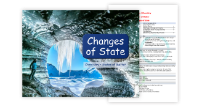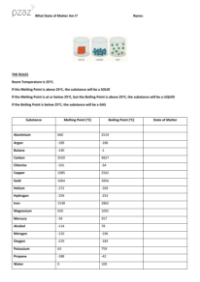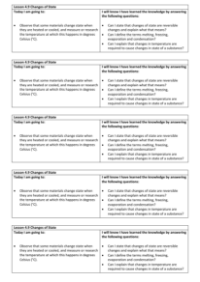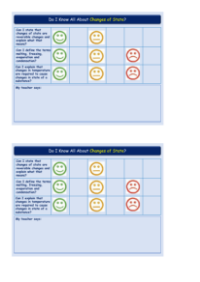Changes of State - Lesson Plan
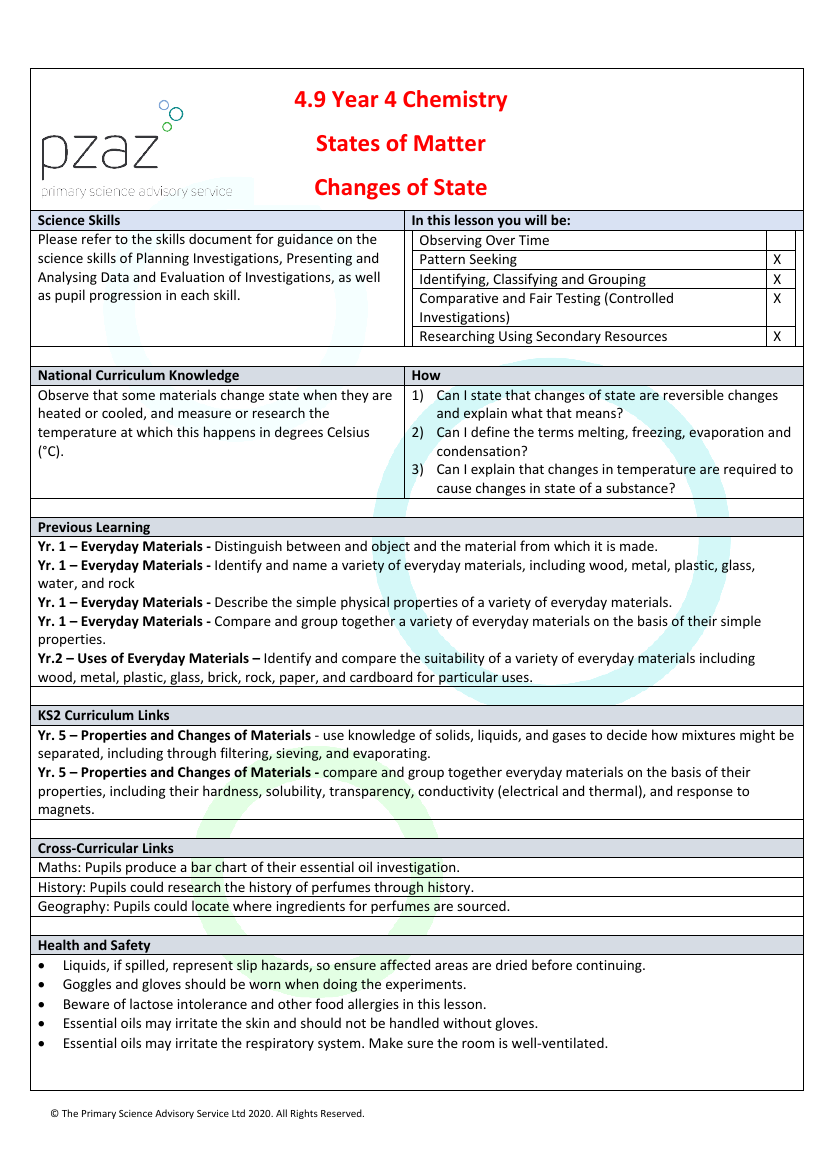
Science Resource Description
This lesson plan from The Primary Science Advisory Service Ltd provides a comprehensive guide for teaching students about the changes of state in materials. Aimed at enhancing their scientific skills, the lesson covers observing over time, pattern seeking, identifying and classifying, as well as conducting comparative and fair testing. The National Curriculum objectives are clear: students will observe and understand that materials can change state when heated or cooled, and they will explore the temperatures at which these changes occur in degrees Celsius. The lesson builds on prior knowledge from Year 1, where students learned to distinguish between objects and materials, identify and name everyday materials, and describe their physical properties. By Year 5, students are expected to use their understanding of solids, liquids, and gases to predict how mixtures might be separated and to group materials based on their properties.
Health and safety considerations are paramount, with precautions such as drying spills to prevent slipping, wearing protective gear during experiments, and ensuring good ventilation when using essential oils. The lesson addresses common misconceptions, such as the belief that changes of state are chemical reactions, and provides corrections to foster accurate scientific understanding. Activities include experimenting with the freezing times of saltwater versus freshwater, making ice cream to explore freezing points, and observing evaporation rates. The lesson also integrates cross-curricular links with Maths, History, and Geography, encouraging a holistic learning experience. Students will be engaged through various hands-on activities, group work, and discussions, all designed to deepen their understanding of the reversible nature of changes in state and the processes of melting, freezing, evaporation, and condensation.
